Oracle Database 11g Release 2 Data Guard Setup using Oracle Grid Control
This article describes the creation of a standby database using Oracle Database 11g Release 2 and the Oracle Grid Control. The article assumes the following servers are present.
- Grid Control (10.2.0.5). An example installation can be found here.
- A primary database server, with Oracle Database 11g Release 2 software installed and an existing database present. An example installation can be found here.
- A standby database server with a software-only installation of Oracle Database 11g Release 2. Setup and installation is the same as the previous server, with the exception of the software-only installation.
- Both database servers should have a Grid Control agent installed. An example installation can be found here.
With this setup in place, the standby database is created and managed from Oracle Grid Control as follows.
Related articles.
Standby Database Creation
Navigate to the "Availability" tab of the primary database server (Targets > Databases > (Primary Database Name) > Availability). Click on the "Add Standby Database" link under the "Data Guard" section of the page.
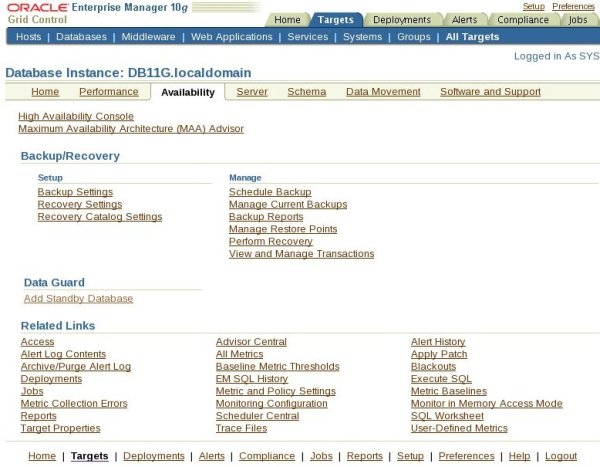
On the resulting page, click on the "Add Standby Database" link.

Accept the "Create a new physical standby database" option by clicking the "Continue" button.
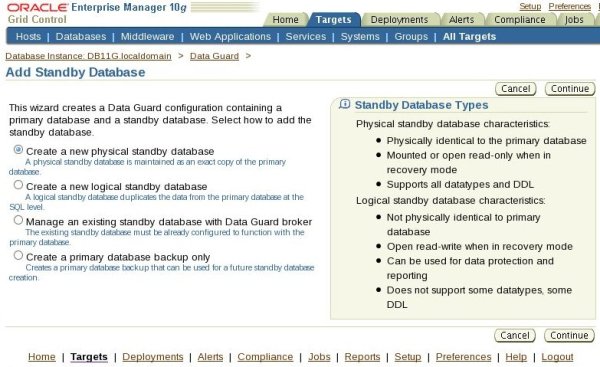
Accept the "Perform an online backup of the primary database" and "Use Recovery Manager (RMAN) to copy the files" options by clicking the "Next" button.
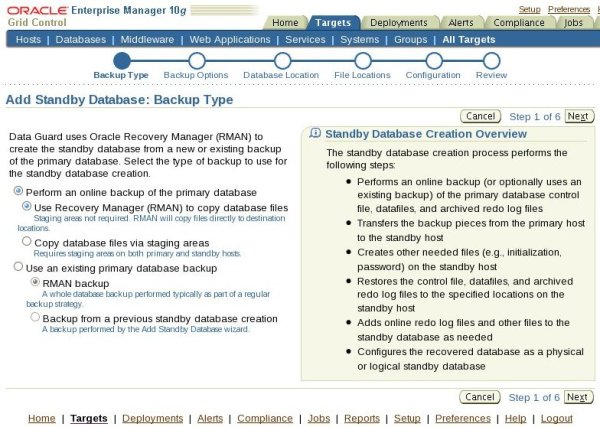
Enter the "Primary Host Credentials", if they have not already been defaulted as a preferred credentials, then click the "Next" button.
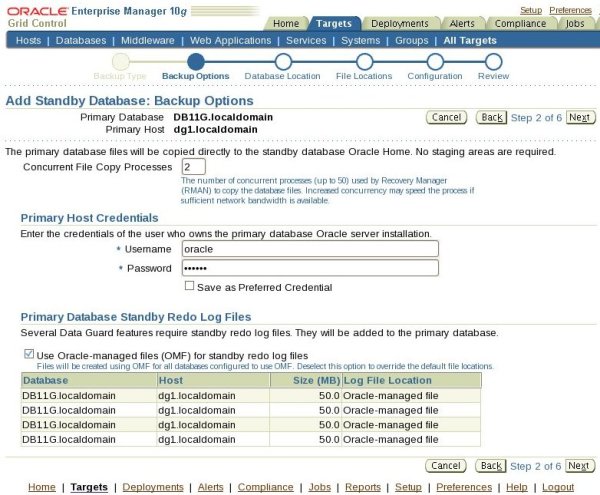
Enter the name of the standby host and its host credentials, then click the "Next" button.
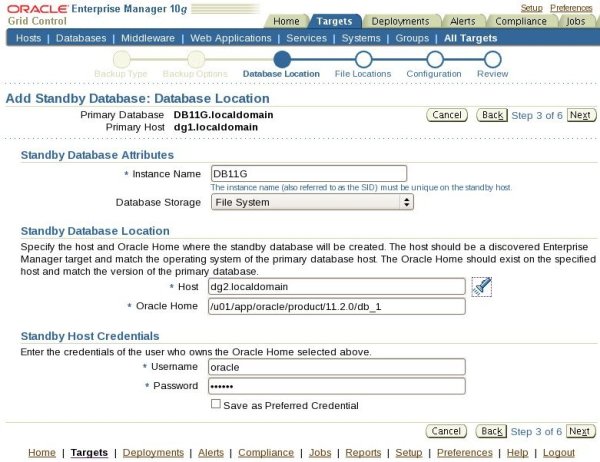
Select the "Keep file names and locations the same as primary database" option, then click the "Next" button.
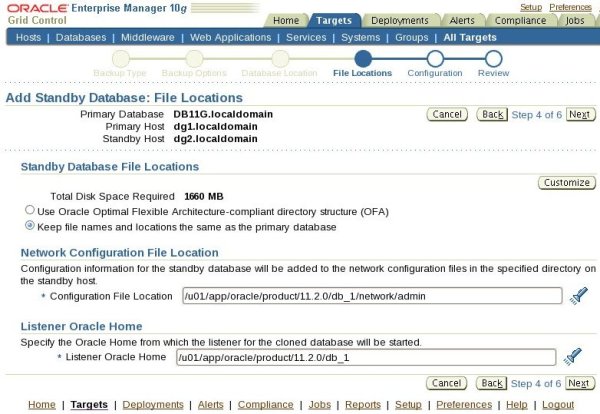
Enter a "Database Unique Name" and "Target Name" and select the "Use SYSDBA monitoring credentials" option, then click the "Next" button. Notice the "Use Data Guard Broker" option is checked.
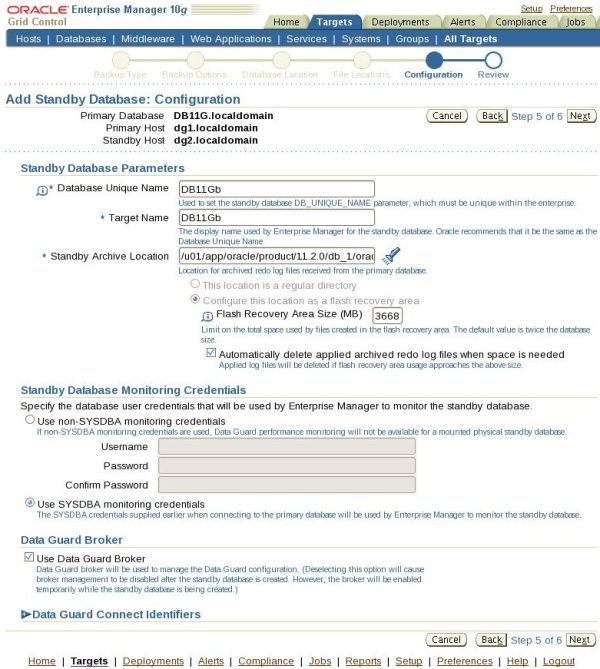
If you are happy with the information on the review page, then click the "Finish" button.
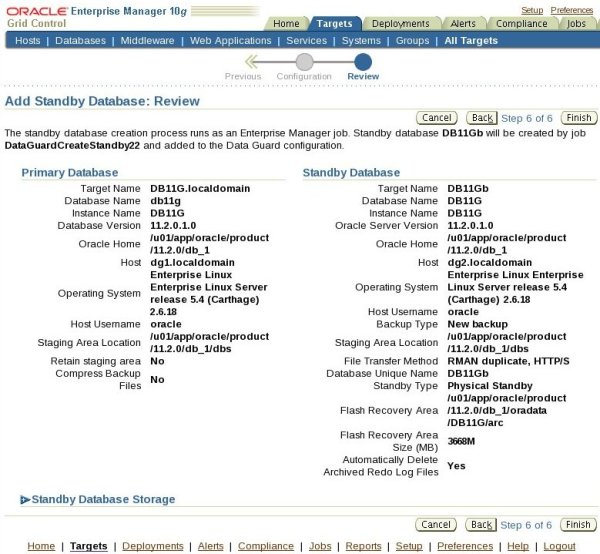
Wait while the first section of processing completes.
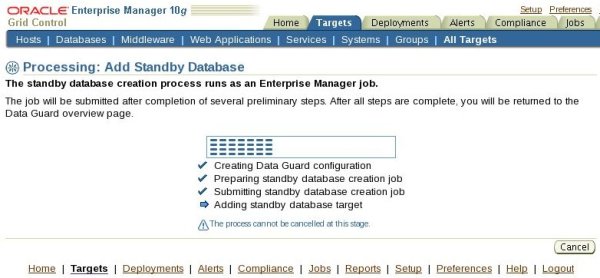
Once the basic processing is complete, you are presented with the Data Guard "Setup and Manage" screen. Towards the bottom of the screen is a list of available standby databases, with the new standby database listed. The status of the new database is "Creation in process". Clicking on this status link gives a breakdown of the current processing.
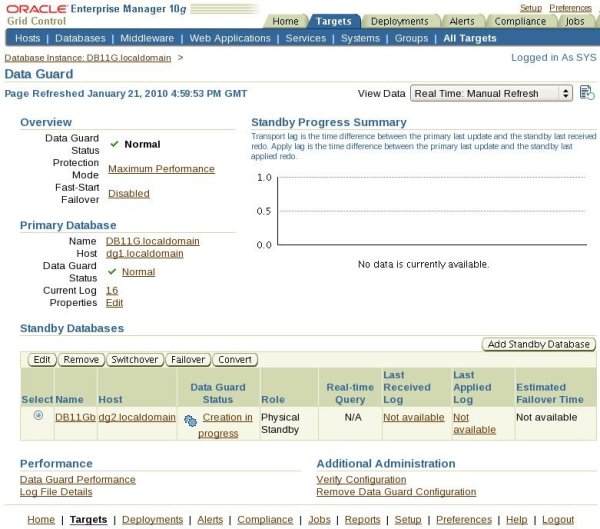
Expand the "Task: DBClone" node for a more detailed status of the operation.
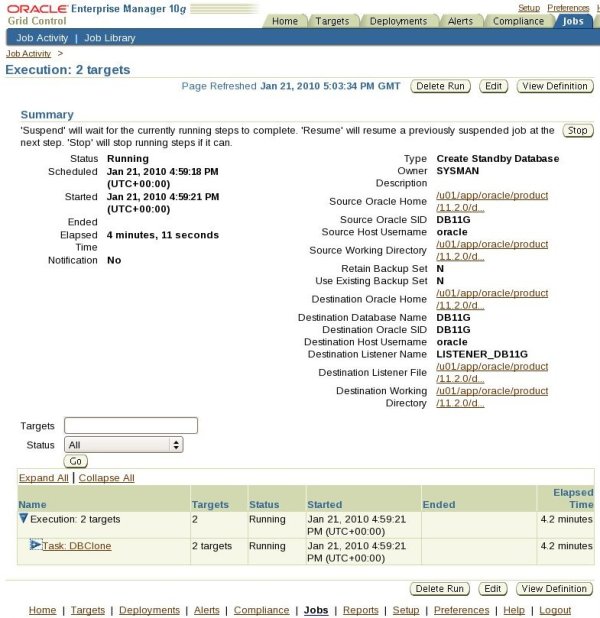
The image below shows an example of the expanded progress.
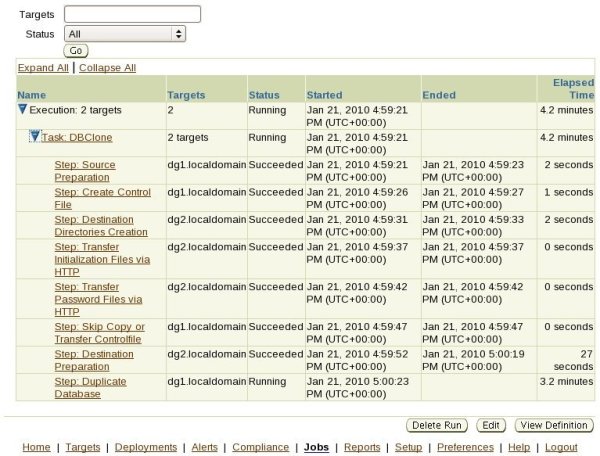
When the standby database creation is complete, the "Setup and Manage" screen will display a status of "Normal" for the standby database.

The "Availability" tab now includes several new links in the "Data Guard" section.
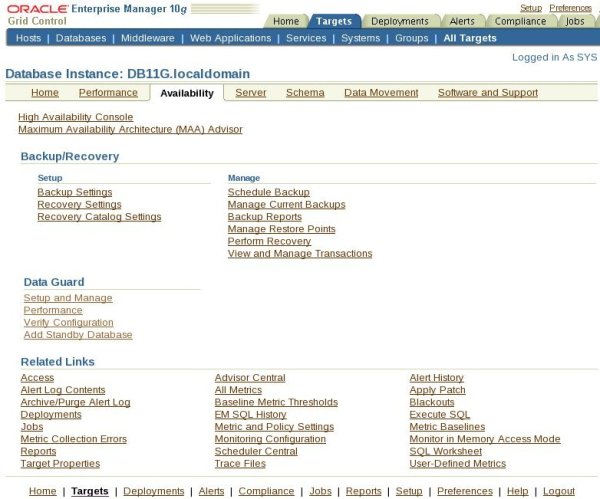
Switchover
To perform a switchover, navigate to the "Setup and Manage" screen, select the standby server you wish to become the new primary server, then click the "Switchover" button.

Accept the "Swap Monitoring Settings" and "Transfer Jobs" options by clicking the "OK" button.
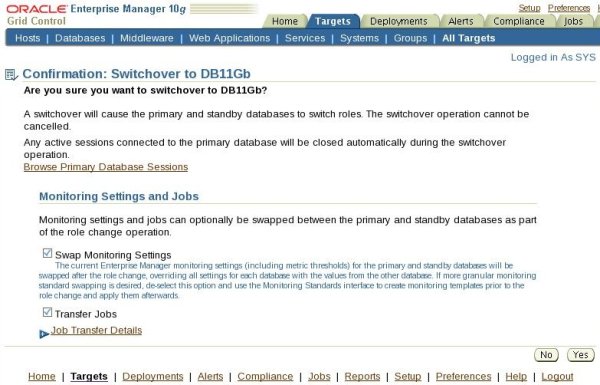
Wait while the switchover processing takes place.
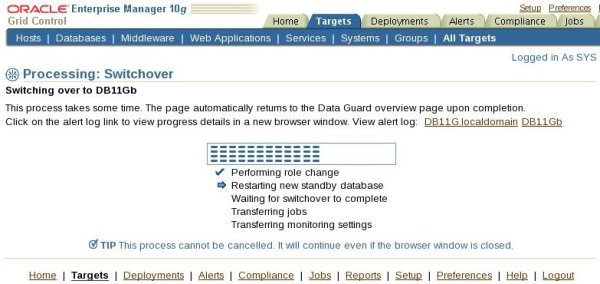
Once complete, the "Setup and Manage" screen shows the primary and standby roles have been reversed.
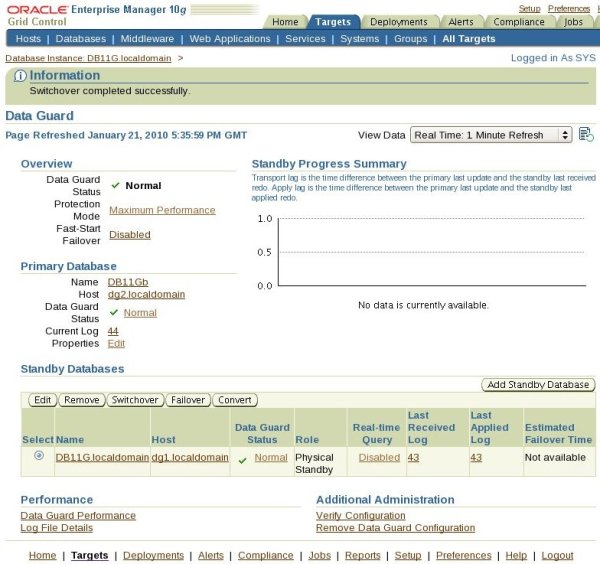
Performance
The "Data Guard" section of the "Availability" tab includes a "Performance" link. Click on this link to monitor the performance of the standby database.

If the database load is too low to stress the standby server, a built in test application can be run to stress test it. The test application is started by clicking the "Start" button under the "Test Application" section.
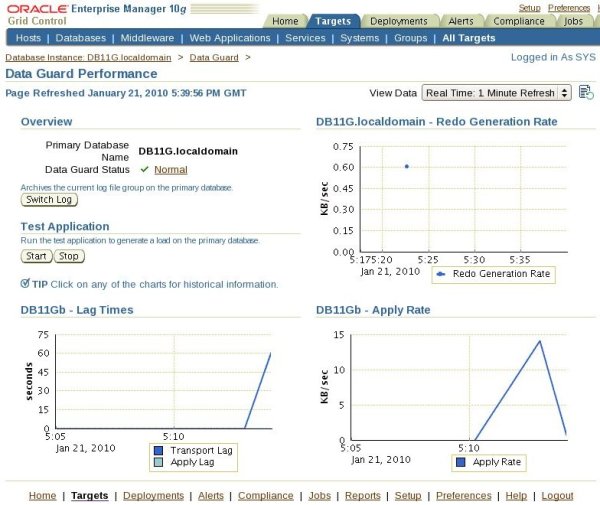
Clicking on the graphs drills down into additional information. When you have finished monitoring the standby performance click the "Stop" button to stop the test application.
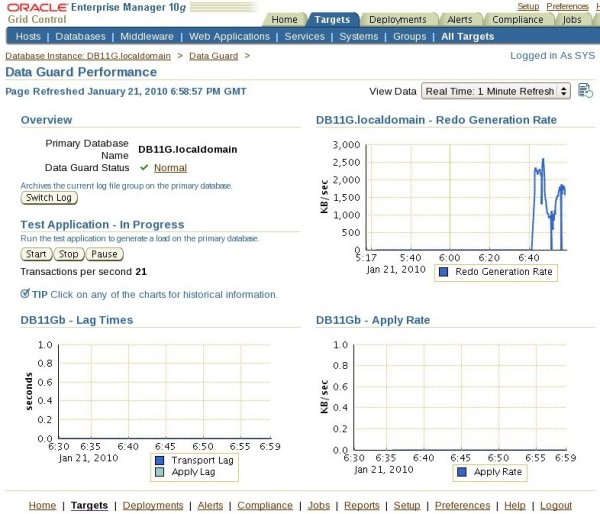
Once the test application is stopped, the performance information gathered is still available.
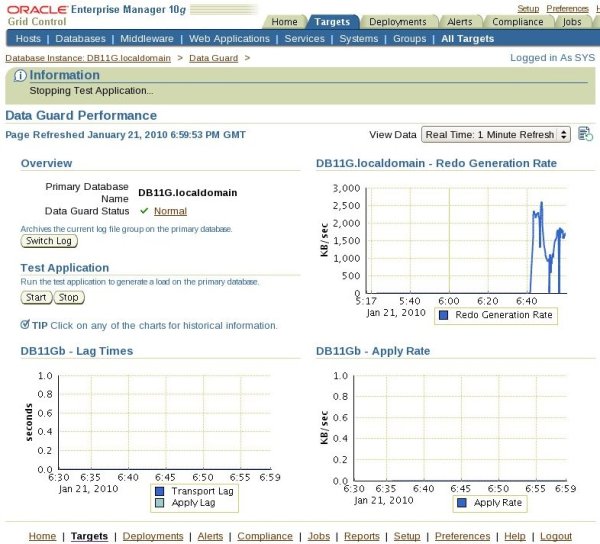
For more information see:













